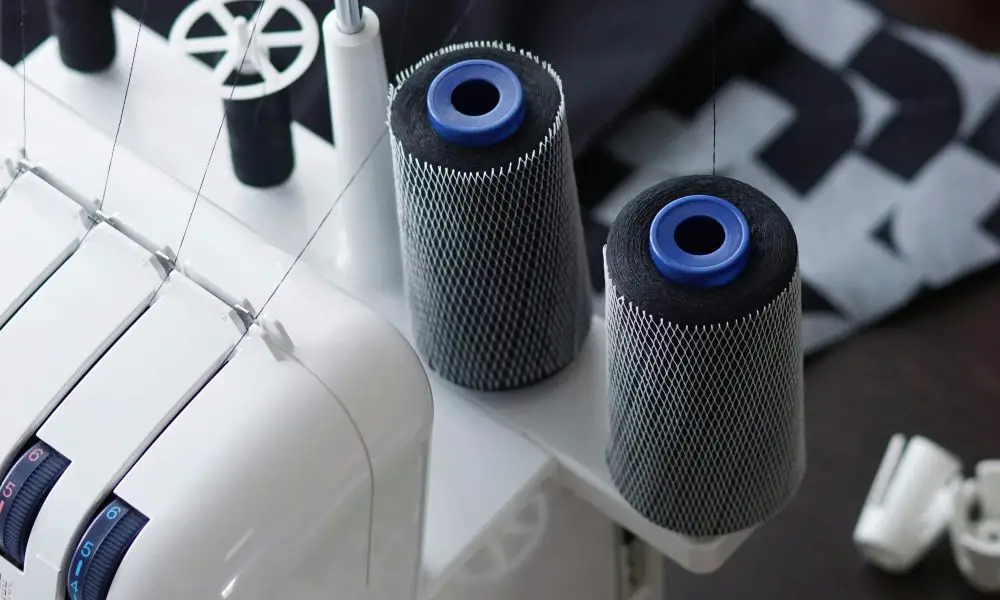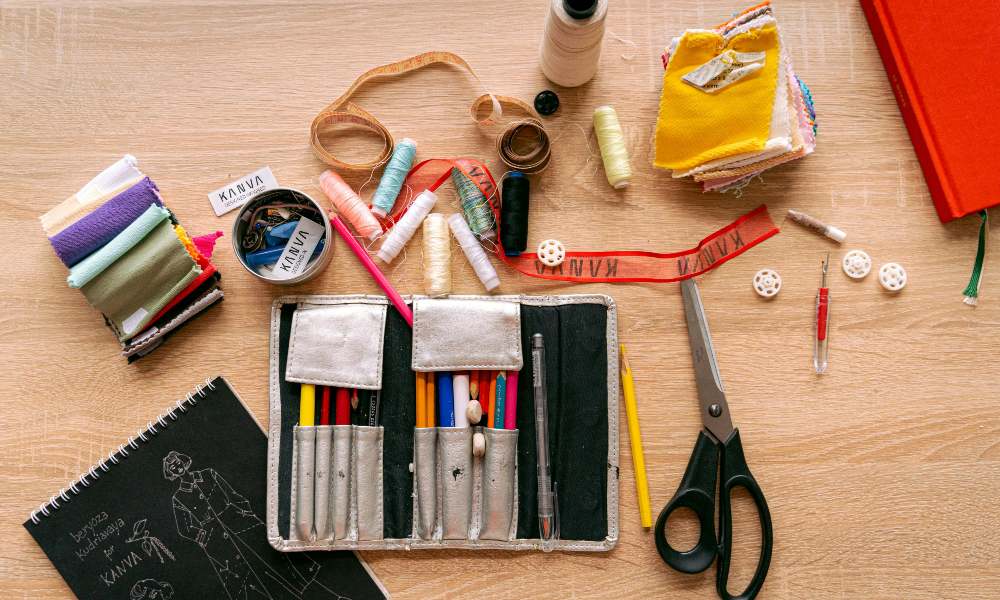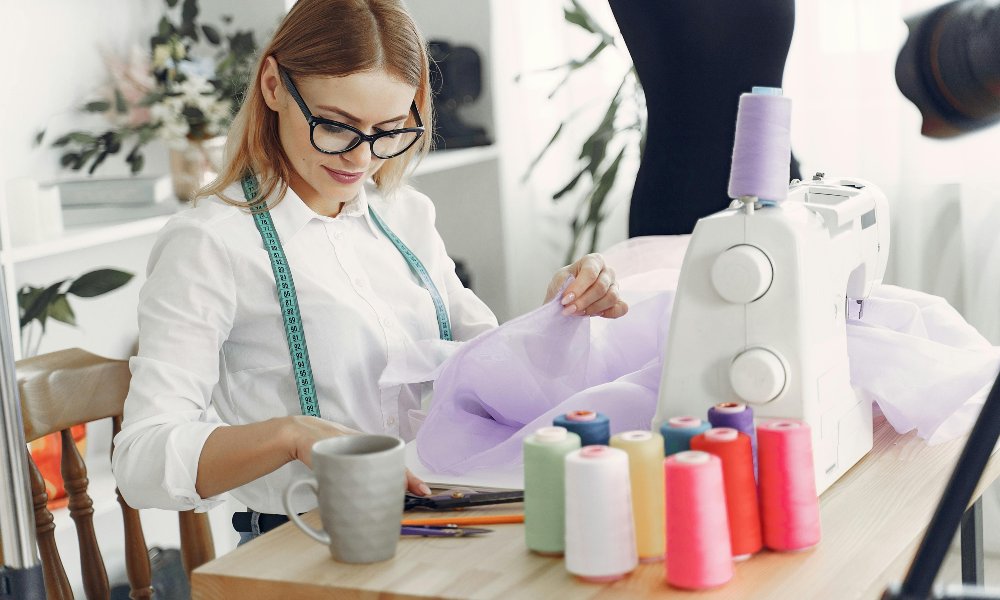Sewing can be a frustrating endeavor when your trusty Janome starts acting up. What’s causing those skipped stitches, broken threads, and uneven tension? Don’t despair! In most cases, some troubleshooting and adjustments can get your sewing machine humming again. Look at some of Janome’s sewing machine problems and potential DIY fixes.
Problems with Needles
One of the first things to check when your Janome starts sewing poorly is the needle. Using a bent, damaged, or improper needle for your fabric is a prime culprit behind skipped stitches, thread breaks, and uneven stitching. Make sure to insert the needle correctly, pushing it all the way up into the needle clamp and tightening the screw securely. Always use the appropriate size and type of needle recommended for your fabric weight and type. A damaged needle can cause all sorts of havoc, so toss it and insert a new one if in doubt.
Choosing the wrong needle is another common cause of Janome sewing issues. Lightweight fabrics like chiffon and satin require a sharp, fine needle to pierce the delicate material without leaving holes or damaging the fibers. Heavyweight canvas and denim need a stronger needle to pass through multiple layers without bending or breaking. Check your Janome manual for the proper needle choices. Using the incorrect needle is a leading cause of frustrating stitch troubles.
Make sure to fully insert the needle up into the needle clamp, pushing it as far as it can go before tightening the screw. Failure to secure the needle properly can allow it to move around, causing skipped stitches, thread breaks, and machine damage. Always change out needles regularly since the constant piercing of fabrics slowly damages and dulls the needle tip. A damaged needle wreaks havoc as it passes roughly through the fabric, pulling and distorting the weave. Don’t try to power through project frustration with a compromised needle – a fresh one can make all the difference!
Thread Issues

Many stitching problems arise from improper threading, tension problems, or lint buildup interfering with the thread path. Refer to your Janome’s manual and follow each step carefully when threading the top thread and bobbin. Make sure the presser foot is raised when incorporating. If experiencing uneven tension, check that the entire thread and bobbin are threaded correctly and try adjusting the tension dials. Clean out any lint accumulation around tension discs and take up levers to prevent interference.
It’s vital to thread the Janome properly by following the threading guide in the manual. Each sewing machine model has a specific path to pass the top thread through the tension discs, take-up lever, and needle. Failing to thread correctly can cause problems, including thread nests, uneven stitching, and needle or thread breakage. Raise the presser foot to open the tension discs when weaving the top thread.
Check for lint and thread accumulation if you notice uneven tension on the top and bottom threads. Lint can quickly build up around the tension discs, interfering with their ability to regulate thread tension properly. Make sure to keep these areas clear of debris. Clean around moving components like take-up levers as well. A small buildup of lint is sometimes the culprit behind sudden sewing frustration!
Problems with Bobbin and Bobbin Case
The bobbin and bobbin case are another common source of trouble. Improper insertion of the bobbin in the case, or incomplete seating of the bobbin case in the machine, can result in several issues ranging from thread clusters beneath the fabric to irregular stitches. Make sure your Janome bobbin is the correct type for your machine. When inserting the bobbin case, push it firmly into place until it clicks. Check for any lint buildup in the bobbin case that could reduce the tension.
Ensure you use the correct Janome bobbin style for your machine. While models like the horizontal and vertical hook bobbins may look similar, combining the wrong bobbin with casing can impede thread tension and feeding. Follow your manual’s instructions for inserting the bobbin correctly in the casing and then fitting the entire assembly back into the machine. The bobbin case needs to click fully into place for proper functionality.
Inspect the bobbin case regularly for lint accumulation, which can override the bobbin tension and cause sewing problems. Lint buildup creates friction, preventing the bobbin from unwinding smoothly. This causes uneven feeding of the bottom thread. Make lint removal from the bobbin area a standard maintenance step to avoid frustration later.
Stitching Problems
Stitching problems like skipped stitches, uneven lengths, or overly loose/tight stitches often stem from incorrect settings and components. Ensure the correct presser foot is attached for your project and the feed dogs are properly raised after darning or button sewing. A damaged throat plate can allow fabric and lint to clog the bobbin area, causing stitch issues. Use the appropriate straight stitch or zigzag throat plate. Check that the stitch length is set correctly for your fabric weight and project.
Attaching the wrong presser foot for your project can spell trouble. For example, you install a zipper foot when sewing buttonholes leaves too much space around the needle, causing uneven stitching. Refer to your Janome manual or quick start guide for the appropriate presser feet for different tasks. Lower the feed dogs for free-motion work like darning and embroidery. Failure to raise them again can cause skipped stitches.
Inspect your Janome’s throat plate (needle plate) and change it if it’s damaged. Cracked or warped plates allow fabric and threads to get sucked down into the bobbin area. This buildup then interferes with smooth stitch feeding. Use the correct plate, whether a straight stitch, zigzag, or embroidery plate. Watch for notches, scratches, and dings, signals to replace the plate.
Issues with Presser Foot, Feed Dogs, and Needle Plate
The presser foot, feed dogs, and needle plate are easy to overlook when diagnosing sewing problems. But an improper presser foot for your project (like installing a zipper foot when sewing buttonholes) can wreak havoc. Ensure feed dogs are raised after darning or button sewing so fabric feeds are appropriate. Built-up lint under the needle plate can impede fabric feeding. Remove the needle plate regularly to clean out any accumulating lint or threads.
Be methodical when diagnosing Janome’s problems by looking at all the components affecting stitch quality. The presser foot holds the fabric flat and ensures it moves correctly through the machine. Damaged feed dogs can’t grip and advance the fabric properly. Lint accumulation under the needle plate can impede smooth feeding.
Using the Janome brush and pipes, make sure to clean the feed dogs located below the needle plate. Pay extra attention to the section directly under the needle zone. Built-up lint acts like speed bumps, interfering with smooth fabric feeding. Prevent buildup by making plate cleaning a standard routine after completing projects. Proper component maintenance helps avoid sewing frustration!
Problems with Machine Components
Check settings on adjustable components like tension dials, presser foot pressure, bobbin winder, etc. If experiencing thread tension problems, adjust the tension dials for the top thread and bobbin. Ensure the bobbin winder is fully disengaged during sewing so the bobbin can turn freely. A loose or damaged needle clamp can allow the needle to move up and down incorrectly. Check for loose or damaged components like belts, motors, or gears that could impact proper function.
Janome sewing machines have various adjustable components that can easily get knocked out of proper position. Ensure tension dials are set correctly for your project’s fabric and thread. Adjust presser foot pressure so that it holds the fabric firmly without distortion. Failure to disengage the bobbin winder prevents the bobbin case from turning freely, resulting in thread jams and nests.
Examine your Janome machine’s functional parts, like belts, motors, gears, and levers. Ensure to check the device for any indications of deterioration or damage that might have happened. Check for loose screws that could prevent it from functioning correctly. A loose or bent needle clamp allows the needle to move around, creating stitch problems. Re-tighten any loose screws and check your manual regarding damaged parts replacement. Catching issues early prevents more extensive repairs down the road!
FAQs
What are some common problems with Janome sewing machines?
Common Janome sewing machine problems include needle issues (bent, damaged, improper needle), thread problems (improper threading, tension problems, lint buildup), issues with the bobbin and bobbin case (wrong insertion, tension problems, lint buildup), skipping stitches, loose stitches, attached the wrong presser foot, feed dog issues, built up lint under the needle plate, incorrectly set tension dials, failure to disengage the bobbin winder and loose/damaged components.
Why is my Janome needle breaking?
Frequent needle breaking is often caused by hitting pins, using bent or damaged needles, improper needle insertion and tightening, or using the wrong size/type needle for your fabric. Always make sure to insert the needle and pull it securely entirely.
My Janome thread keeps bunching and tangling – help!
Thread nests and tangling commonly result from improper threading, lint buildup in mechanisms, poor quality thread, incorrect tension settings, and failure to disengage the bobbin winder. Carefully follow threading diagrams, clean lint from discs/levers, use quality thread, check tension dials, and ensure the bobbin winder is disengaged.
Why is my Janome skipping stitches?
Skipped stitches typically result from a damaged/bent needle, improper needle for fabric, lint accumulation under the throat plate, poor threading, hitting pins, offensive presser foot pressure, lowered feed dogs, or a damaged feed dog or needle plate.
Conclusion
You can solve many common Janome sewing machine problems with focused troubleshooting. Always check needles, thread condition and path, bobbins, presser feet, and machine settings. Cleaning out lint accumulations can also go a long way toward getting your Janome running smoothly again. Follow your manufacturer’s recommendations for maintenance, settings, and compatible components for your particular Janome model. Persistent problems may require professional servicing, but you will have the peace of mind knowing you did everything possible before taking your Janome in for repairs.
Does your sewing machine ever act up and leave you frustrated? Let us know if you have any troubleshooting tips to share! Proper needle selection, threading, component maintenance, and regular lint removal can bypass many headaches. Keep your Janome from getting the best of you – learn to troubleshoot confidently and keep your sewing on track!
***
Main image: freepik.com




